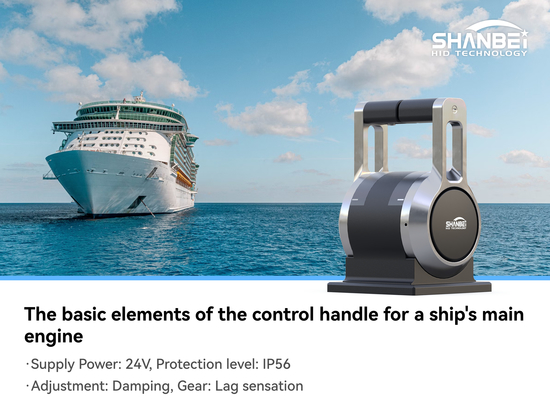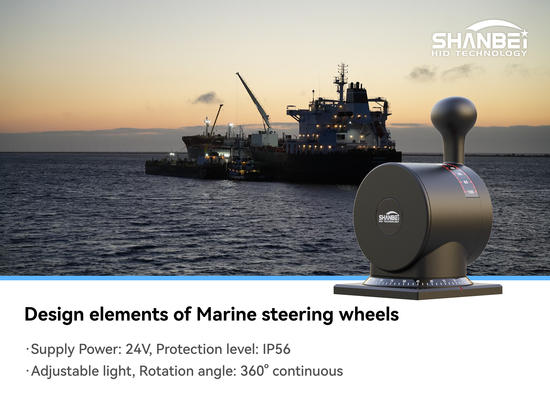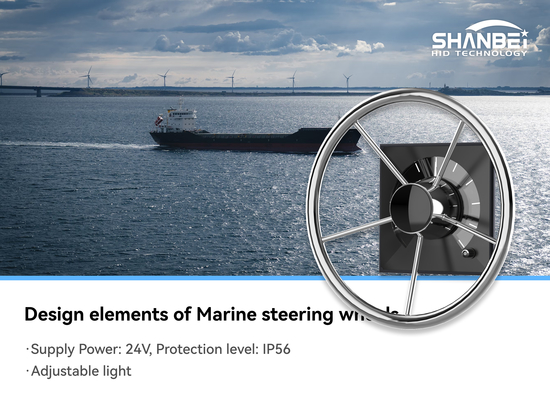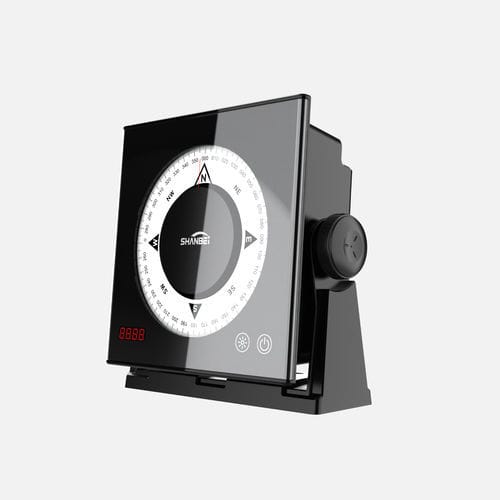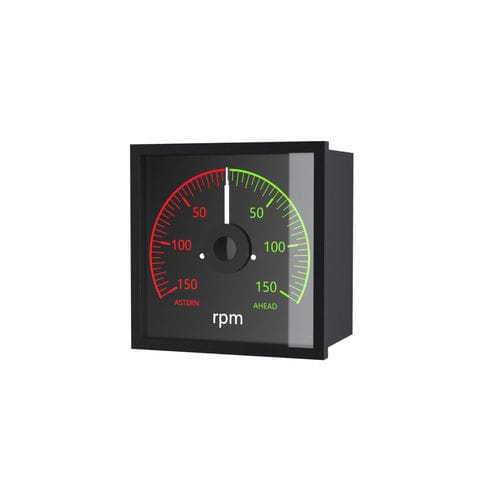
#Industry News
Key Design Considerations for Marine LCD Instruments
The design of marine LCD instruments must closely integrate with the complex operating conditions of ships (such as high vibration, intense sunlight, humidity, and large temperature differences) and the operational needs of crew members.
I. Environmental Adaptability Design
1. Display Performance Optimization
① Readability in Strong Light: Use high - brightness LCD screens (brightness ≥ 1000 nits), paired with anti - glare coatings (surface haze ≤ 5%) and polarizing films to reduce sunlight reflection. Support automatic brightness adjustment (a photosensitive sensor senses the ambient light in real - time, with an adjustment range of 10 - 1000 nits).
② Operation in a Wide Temperature Range: Be able to operate in the temperature range of - 20°C to + 60°C. Adopt industrial - grade LCD panels and temperature - resistant backlight modules to avoid black screens at low temperatures or color spots at high temperatures.
③ Water and Dust Resistance: The protection level of the housing should be ≥ IP67 (resistant to water immersion at a depth of 1 meter for 30 minutes). Use silicone rubber seals at the joints, and cover the display screen surface with tempered glass (hardness ≥ 7H) to prevent scratching.
2. Resistance to Vibration and Impact
The internal structure uses shock - absorbing brackets (rubber damping pads or metal springs). The circuit board is reinforced (the edges are coated with three - proof paint, and the components are fixed with glue), complying with the IMO "Ship Equipment Vibration Test" standard (vibration frequency 1 - 200Hz, acceleration ≤ 5g).
-------------------------------------------------------------------------
II. Human - Machine Interaction and Information Display
1. Readability Design
① Hierarchical Information Division: The main interface should prioritize displaying core data (such as heading, speed, water depth, engine speed). Secondary information (such as fuel consumption, battery voltage) can be switched through pagination or pop - up windows. Key parameters are marked with high - contrast colors (red for warnings, green for normal, in line with the ISO 3864 safety color standard).
② Font and Graphic Specifications: The height of numbers/letters should be ≥ 8mm (clearly recognizable at a sitting viewing distance of 500mm), and sans - serif fonts (such as Helvetica) should be used. The scale interval of pointer - type instruments should be ≤ 5°, and the update delay of dynamic data should be ≤ 0.5 seconds.
③ Multi - Mode Adaptation: Support automatic switching between day and night modes (reduce the brightness to 50 nits at night to avoid light pollution from interfering with night vision), and enable reverse - color display in strong light (change from black text on a white background to white text on a black background).
2. Operational Convenience
① Compatible Interaction Modes: Combine touch screens (capacitive, support operation with thin gloves, response time ≤ 15ms) and physical buttons (waterproof buttons, stroke 2 - 3mm, feedback force 5 - 10N). For complex operations (such as parameter settings), a rotary encoder is provided to prevent accidental touches.
② Eye - Friendly Layout: The installation height should be within ± 15° of the horizontal line of sight of the driver in a sitting position, and the screen inclination angle should be 10° - 30° (to reduce reflection and neck fatigue). Important alarm information (such as over - speed, faults) uses pop - up windows + flashing icons + buzzer (volume 70 - 85dB, 15dB higher than the ambient noise).
-------------------------------------------------------------------------
III. Reliability and Functionality
1. Hardware Reliability
① Power Supply Stability: Support wide - voltage input (9 - 36VDC), with built - in surge protection (resistant to instantaneous voltage ± 2kV) and reverse - connection protection. The power consumption should be ≤ 15W (≤ 5W in energy - saving mode).
② Data Redundancy and Backup: Critical data (such as navigation tracks, device status) is stored in real - time in the local memory (supports TF card expansion) and can be synchronized with the ship's central control system through NMEA 2000/RS485 interfaces.
2. Functional Integration and Expandability
① Multi - System Compatibility: Support NMEA 0183/NMEA 2000 communication protocols, and seamlessly connect to devices such as GPS, radar, ECDIS (Electronic Chart Display and Information System), AIS (Automatic Identification System) to achieve data fusion display.
② Customizable Interface: Allow users to customize the display layout (drag - and - drop component editing) to adapt to the different needs of different ship types (such as cargo ships, yachts, fishing boats).
-------------------------------------------------------------------------
IV. Safety and Compliance
1. Fault Diagnosis and Warning
① Built - in self - test function (full - screen test at startup, sensor connection status detection). When an abnormality occurs, multi - level alarms are triggered (Level 1 warning: yellow flashing; Level 2 fault: red constant + continuous buzzer sound), and signals are sent to the cab alarm system through the API.
② Dual - source verification of critical data (such as simultaneously connecting two heading sensors to automatically compare data consistency) to prevent misjudgment caused by single - point failure.
2. Standards and Certification
Comply with the IMO "International Convention for the Safety of Life at Sea (SOLAS)", IEC 60945 (General Requirements for Marine Electronic Equipment), and classification society certifications (such as DNV GL, ABS, CCS). The electromagnetic compatibility (EMC) should meet the CISPR 33 Class B standard to avoid interfering with ship navigation equipment.
-------------------------------------------------------------------------
V. Structural and Installation Design
1. Compactness and Modularity
① The body thickness should be ≤ 50mm (to adapt to the narrow cockpit space). Adopt embedded installation (the front panel is fixed, and the back wiring terminals are modularly designed), and support quick disassembly and assembly (replacement time ≤ 10 minutes).
② The housing material is selected from anodized aluminum alloy (lightweight and corrosion - resistant) or glass fiber - reinforced plastic (resistant to salt - fog corrosion, in line with the ASTM B117 standard).
2. Ergonomic Optimization
① Screen Size Adapted to Viewing Distance: At a viewing distance of 500mm, a 7 - 12 - inch screen is recommended (pixel density ≥ 150PPI) to avoid frequent scanning or zooming operations. The operation area should be concentrated in the lower 1/3 of the screen, which conforms to the natural range of motion of the human upper limb.
-------------------------------------------------------------------------
Conclusion
The design of marine LCD instruments should focus on "environmental tolerance, information efficiency, and operational safety". Through innovation in display technology (visibility in strong light, operation in a wide temperature range), optimization of human - machine interaction (clear layout, multi - mode operation), enhancement of reliability (resistance to vibration and water, data redundancy), and compliance with standards, it ensures accurate and stable information support for crew members in complex marine environments, reduces the operational load and the risk of misjudgment, and ultimately improves the safety and operational efficiency of ship navigation.


